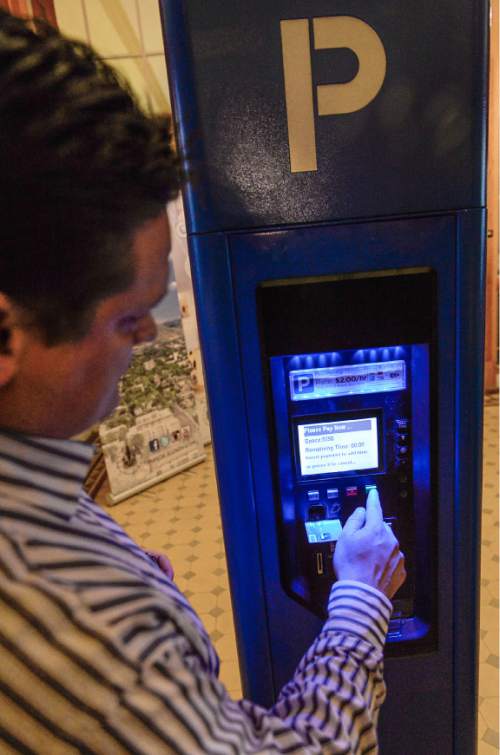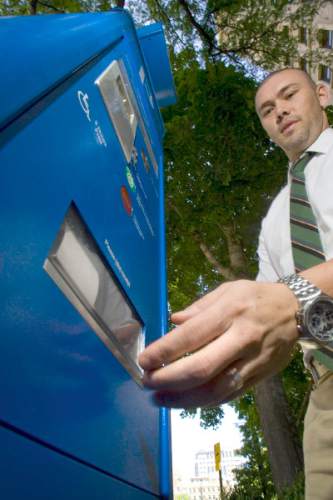This is an archived article that was published on sltrib.com in 2016, and information in the article may be outdated. It is provided only for personal research purposes and may not be reprinted.
Salt Lake City's main commercial hubs have more than enough parking stalls to keep motoring customers happy, but the supply of available spaces is not well managed, a new study finds.
Downtown alone boasts around 33,000 parking spots, with about 3,000 on the street and another 30,000 in privately owned lots and multistory garages. Yet nearly 40 percent of those stalls can sit empty during hours of peak demand — even as frustrated drivers circle city blocks looking for a spot, contributing to traffic congestion.
"There is no shortage of parking spaces anywhere downtown," said Jeff Tumlin, principal and director of strategy for Nelson/Nygaard. The problem relates to management, he said, not supply.
In a comprehensive look at parking issues downtown and in Sugar House, transportation analysts with San Francisco-based Nelson/Nygaard Consulting Associates recommend a customer-friendly approach to improving parking signs and charging systems throughout the city.
"There are parking signs everywhere in your downtown," said transportation and parking consultant Phil Olmstead, also with Nelson/Nygaard. But the signs lack coordination, leaving drivers confused and anxious.
The city-commissioned study, presented Tuesday to a group of government officials and downtown business owners, also suggests a new system of variable pricing — in some cases, charging where parking is free and making it free where it now costs money, depending on demand, location and time of day or week.
Leaders need to stop looking at parking fees as a source of cash, Tumlin said, and see them more as a management tool.
"The reason we charge for parking," he said, "is so that customers can find a space, and your downtown and commercial districts can be more successful,"
Parking issues also need to be studied against a backdrop of steadily declining vehicle use, he said, noting that younger adults are opting increasingly for walking, mass transit and ride-sharing services such as Uber and Lyft. Aging baby boomers also are getting out of their cars and walking more these days.
Too much parking threatens to lure too many drivers, adding to traffic jams, concrete sprawl and detracting from other downtown attractions.
"It is absolutely critical that downtown Salt Lake have enough parking," Tumlin said, "but it is probably worse for downtown Salt Lake to have too much parking than it is to have too little parking."
The study urges more coherent City Hall policies on parking and a centralized management system for spaces under private ownership, possibly run through the Salt Lake Chamber.
Surface and off-street parking is expensive to build and maintain, significantly boosting housing costs and often consuming valuable land, Tumlin said.
"It needs to be managed as the valuable asset that it is," he said.
But that idea is likely to run into resistance from parking-lot owners and businesses that may be defensive about their share of stalls for customers.
"It seems like the right thing to do and the hardest thing to do," said Dee Brewer with City Creek Center, site of an underground parking lot with about 5,600 stalls.
Tumlin agreed, saying other cities have also found it "really tough" to coordinate public and private parking interests.
Twitter: @TonySemerad







